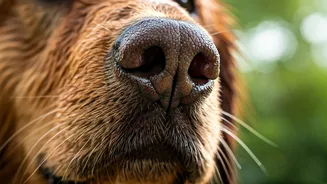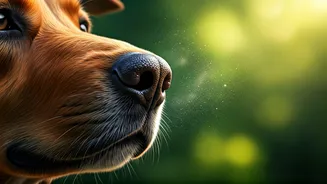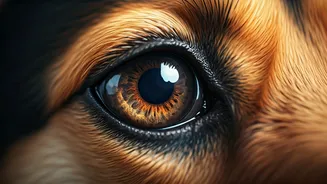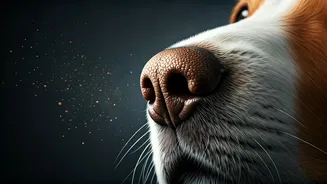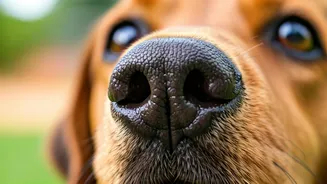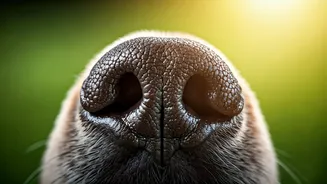The Amazing Nose
Dogs are renowned for their incredible sense of smell, far surpassing humans. Their olfactory system is a marvel of biological engineering. They possess
hundreds of millions of scent receptors, compared to a mere six million in humans. This allows them to detect odors at concentrations as low as one part per trillion, a feat that is simply beyond our comprehension. The portion of their brain dedicated to processing smells is also significantly larger than ours, reinforcing their superior scent-based perception. This keen sense is not just for tracking; it plays a critical role in their understanding of their surroundings, including social cues, potential dangers, and even emotional states. This incredible ability is why dogs are used in so many important roles, such as search and rescue and detecting diseases.
Hearing the Unheard
Dogs also have impressive hearing abilities, allowing them to perceive a far wider range of frequencies than humans. Their ears are designed to capture and amplify sounds, including high-pitched noises that often go unnoticed by us. They can rotate their ears to pinpoint the source of a sound with astonishing accuracy. This heightened sensitivity allows them to detect subtle changes in sound levels, even at a considerable distance. The auditory cortex in their brains, the region that processes sound, is similarly well-developed, ensuring they can interpret what they hear quickly and efficiently. These abilities are essential for survival, enabling them to identify predators, locate prey, and react swiftly to environmental cues.
Vision: A Different View
While not as clear as human vision, dogs' sight is specially adapted for their lifestyle. They possess a wider field of vision, helping them detect movement from all directions and spot potential dangers more quickly. Dogs see the world with a limited color spectrum, perceiving colors mainly in shades of blue and yellow. Red and green appear as varying shades of gray, making their visual experience very different from our own. They also have excellent low-light vision, thanks to a structure called the tapetum lucidum in their eyes, which reflects light to the retina. This enables them to see better in dim conditions.
Taste and Flavor
The sense of taste in dogs, while functional, isn't as critical as their sense of smell. They have fewer taste buds than humans, meaning that they can't appreciate the nuances of flavor in the same way. However, their ability to taste is still important. It helps them identify different tastes, such as sweet, sour, salty, and bitter. The information from their taste buds, combined with the scent information picked up when they're eating, leads to flavor perception. Flavor is the complex combination of taste and smell. This helps them determine what's safe to eat and avoid foods that could be harmful.
The Power of Touch
Dogs have a highly developed sense of touch, which is critical for their social interactions and understanding of their surroundings. They have a dense network of touch receptors spread across their bodies, allowing them to feel pressure, temperature, and pain. The areas around their face and paws are especially sensitive. These receptors help them navigate their environment and communicate with other dogs and people. The sense of touch is critical for bonding, providing comfort, and assessing social cues. When a dog receives a pat or cuddle, the touch receptors send signals that can reduce stress and increase feelings of well-being.
Beyond the Senses
Beyond the basic senses of smell, hearing, sight, taste, and touch, there is evidence that dogs have a sense of time. They have an uncanny ability to anticipate events, such as when their owners are coming home. There is also emerging evidence that they can sense subtle changes in electromagnetic fields, allowing them to detect storms or other environmental changes before humans can. These senses are far more complex than we can imagine. Understanding these hidden abilities provides a better understanding of how they perceive the world around them and why they act the way they do.
